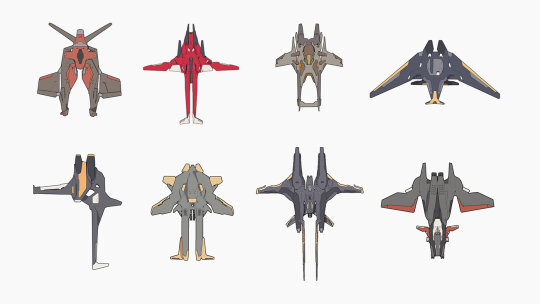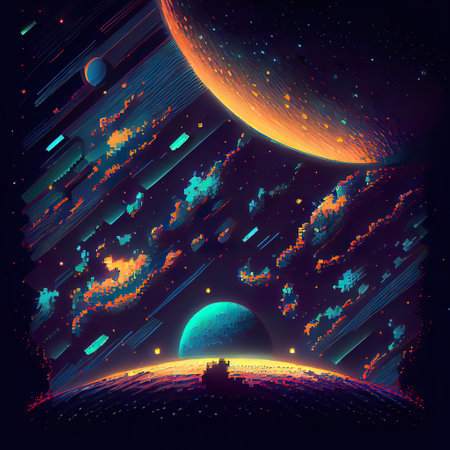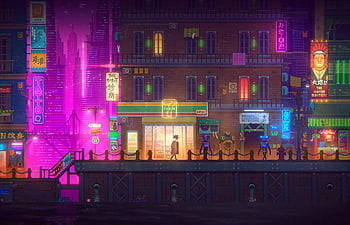Don't wanna be here? Send us removal request.
Text
Lethal Cuts Postmortem
The biggest issue that was faced during the developement on Lethal Cuts was bugs. Some of the systems present in the game relied heavily on timers, timers that could, in the presence of other events, overlap and cause strange results.
This greatly affected the M2M of all playtests. The players would find game breaking bugs where the game would need to be manaully restarted, and would frequently find inconsistencies in mechanics such as death and attack collision.
The next issue that plagued lethal Cuts was was the Intensity system, or more accurately, the current effects of high / low intensity on players. Currently, a player with high intensity will find it easier to fight, and easier to generate intensity, while a player that is low intensity is at a massive disadvantage. The design is more punishing for the losing player.
If I was to restart this project, I would make serious changes.
1. Many of the animations have multiple staged that are governed by timers, this makes that animations smoother but introduced bugs. Remove the transitions, the animations will not be as smooth, but the gameplay will be more reactive
2. The intensity mechanic lends itself better to long drawn out battles rather than the short ones seen in this version of the game. So, add health bars and one cut no longer kills. This will make for a more classical fighting game experience, and give the intesity mechanic more time to control the tempo of gameplay.
3. Change the way Intensity is generated. this would require multiple prototypes and playtesting to get working well, however some ideas could be collectables/powerups that spawn as the game goes on, a "Dragon Ball Z"-esk charge up action, or maybe even having challenges that generate for each player, forcing them into particular playstyles for rewards of intensity.
0 notes
Text
Lethal Cuts Developement Progress
I have found in my time with Gdevelop that is has a lot of tools to make simple mechanics really simple to make. However, once you try to add complexity to that system, the behaviours that make it really easy to start, begin to hold the system back. This I discovered early in the developement of Lethal Cuts, and had to essentially restart, making the whole animation of each of the player charactes from scratch.

After the animations for Attacking, air attacing and blocking were in place, my next hurdle to cross for a fighting game was attack collision. I decidde to use a common trick with Gdevelope creators, and use a separate object to interract fo attack collisions, this way I could easity separate the weapons and bodies of the characters. a simple white square was shaped to size, tethered to the characters and their facing direction, and had their opacity set to 0 on startup.
List of changes/features: Intensity bar and decay Intenstiy increase on bloack collision (static) Intensity increase on parry (dynamic) blocking, with timers tied to intensity (dynamic) attack collision sound effects controller support stark effect on parry life change on attack collision end of game screen / game reset
0 notes
Text
Racing Game Dev Post
During the development of Reality Riders, I decided to start focussing on ensuring specific manoeuvres were possible in the game, namely, being able to slip between oncoming traffic effectively. As seen in the captured footage below, the spacing and speed of the cars facilitates a skilled player to slip between them, and as seen at the end of the clip, its not so easy that you never fail.
The major focus of the game is player experience. Players should feel like they are a skilled driver, slipping between the competition, and pulling off risky tricks. That should be a focus of the moment -to-moment gameplay, making the decision to use tricks that players keep up their sleeves. Therefore, the design of the game must facilitate this, one way to do that is to focus on the skill floor and ceiling.
Skill floor and ceiling are large concepts, that span a game’s entire lifecycle, however, in Reality Riders, manoeuvres can be chained together and through mastery of one skill, opportunities to others open. This is the core idea of the skill barrier design that I have begun to implement in this initial draft of the game.
The very first manoeuvre for a player to master is overtaking, slipping closely between two cars. The make this possible, I had to play with the spawn rate and speed of the cars so that the opening is just the right size, and I could make it smaller or larger to make it more or less difficult. Another factor that affected the difficulty of the manoeuvre was the angle that the player’s car sits on while moving horizontally, this too go messed with to find the right balance.
The development of Reality Riders will be filled with moments like these, where the interactions between objects and how the player can use it to their advantage must be tweaked, to keep the game challenging and rewarding.
The next feature that I focussed on during this development was random spawning. Rather than having specific colours of cars tied to lanes, I decided to make it completely random. By making a spawner object, placing 4 instances of them above each lane, I could use Gdevelop’s “choose random object” logic block. From there, the same timer as in the tutorial was used, and a random animation for the car is loaded to decide the colour.

0 notes
Text
Astrolakis Xenopunch Postmortem
My developement of a prototype for Astrolakis Xenopunch, began with the player's ship, and ended with the player's ship. After playing with astroid interraction it discovered that what is important to this game sin't having a dangerous environment, that is unpredictable or particularly hard like in most astroid style games. Astrolakis Xenopunch is about customisation, the feel of the M2M, flying through space how YOU want to, destroying astroids and enemies in YOUR own way.
The first way to do this was movement. It must be engaging, easily alterable behind the scenes, and fun to master. To make this system, I made guide object to essentially simulate weight and delayed movement, the stystem can be altered fairly easily, however, I believe if I was to do it again i could do better by implementing a more complex algorithm that takes multiple statistics. This would open the door to a much more diverse customisation system in the game.
Thats not to say that enemies aren't at all important in an astroids inspired game like AX. I implemented some collision interactions between the astroids, which came out fairly well, there were still bugs in the prototype of this system (such as large astroids spotaneously exploding) however it showed potential fora more insignificant feature for the game.
0 notes
Text
Racing Game Elevator Pitch
Reality Riders is a 4-dimentional, action, racing game, where players can swab between one of 2 dimensions while racing. While they are out for the finish line, there are two tracks for players to race on, one in the normal world, and one in an alternate reality, with different hazards but a mostly unchanged track. Every time they complete a lap, players earn an Ether-charge, allowing them to change reality. Customise your sci-fi, space tearing, racecar with a variety of parts and body pieces, or use one of the prebuilt kits to recreate the car of your dreams.
0 notes
Text
Platformer Postmortem
My first step in making a platformer was to determine assets, I had decided not to use the assets provided by the workshop and to instead search GDevelop for something different. I found a series of desert themed backgrounds and platforms that I decided to use, going with the desert theme i could have collectables and checkpoints that suit the theme aswell.
From this the concept of cactus checkpoints that grow upon interraction became something I wanted to implement.
I found an asset for the player, a fairly basic human player, he was intended to be a blank slate for the player to identify with and feel more immersed in the setting.
The next steps for making the platformer were:
Get the platforms and player interracting
Set up a control sheme for the player character
animate the player character
Once these three steps were completed, aditional mechanics such as collebtables, scoring, checkpoints and finishing the game could be tackled.
Gdevelopes behaviour system can make these systems very easy to create. By giving the player sprite the "platformer object" behaviour and the platforms the "platform" behaviour, you can complete steps 1 and 2. Gdevelop also has a behaviour to animate characters, however it is limited, so it is best to animate the player manually using the event system. After the animation implementation was finished, the character could run, jump and look left and right while doing either.
Next, I made an enemy, I chose an octopus, starting the games narraive of desert vs ocean. All the enemy needed to do was serve mindless terrain, much like the enemies in Mario, a staple of platformers. It moves left and right at around the same pace as the player. The player can jump on it's head to kill it, and recieves an extra jump for doing so. This feature could be explored in future for puzzle solving. If the player touches the octopus other than jumping on it, they will be sent back to the start or their most recent checkpoint.
A score system was also created, with sandbags taking the place of coins, the players score goes up by one for each sandbag collected, and is noted at the top left of the screen, as to not interfere with M2M gameplay.
If I was to recreate the prototype, I would like to expand the level design, the level in the protoype is very basic, for the sake of testing the mechanics on offer. It would be interresting to make a more vertical level and implement a wall jumping mechanic or something like it. The player character could also use rethinking, it brings forth the question. Is it more immersive to have a player character that players can self-insert, or a more fleshed out character for players to roleplay? If given another chance at this prototype I would like to explore the latter, giving the player character more spotlight, and developing mechanics that reflect the character, prompting players to feel like that character and immerse through M2M gameplay.
0 notes
Text
Astolakis Xenopunch Developement Update

As an astroids style game, recreating the defining features of astroids was important to capture the desired player experience. For me, that is the movement, it must feel like like piloting a space ship, the player must feel momentum and learn to adapt to it. For the movement system shown here, I made a guide object he simulate he drifting feeling of the ship. the game calculated the angle that the ship is facing, then moves the guide in that direction, the ship in turn follows the guide. Rather than following the mouse weightlessly, the ship now swings as if tied on a string. This system is easily tuned and can be changed for the different ships in the game, with particular ships having different stats for weight, thrust, handling, and deceleration, all these can be altered individually, making some interesting combinations, and allowing players to tailor their experience and play style.
Additionally, I started implementing a physics system for the astroids, so that they would bounce off of each other. this was fairly easy to do with astroids of a different size, however when trying yo make astroids of the same size interract, it is difficult to differentiate between the two with the engine.
As an alternative interraction, when two large astroids collide, they break into two medium ones. I have found a bug in this system that I have not yet fixed. When a new astroid attempts to swawn on an existing one, the random spawner moves it elswhere, but not before the astroid colliion system registers the collsion. which results in large astroids randomly breaking apart.
0 notes
Text
platformer developement post (Cactustown)
During the developement of my platformer, I decided to focus on implementing a scoring system, with collectables, remeniscent of coints from mario or rings from sonic. The collectable for Cactustown are sandbags. Each time the player collects a sandbag their score in the top left of the screen increases. This gives inscentive for the player to explore levels. Collectables act as a pulling force for the player to test their skills, and compare each others scored.

Pictured above is another platforming staple that i implemented, bouncing on an enemy. This adds another traversal mechanic that players can utilise, and open up my level design in the game, making spaces that are only accessible with a boost from an enemy.
One more thing to take from the footage above is the cactus. The cactus exists in a forward layer,so the player moves behind it. Havingassets in the foreground greatly increases the immersion of the player, and makes the setting of the game more engaging. Its a small touch but can be utilised interestingly depending on the setting, such as the player moving behind prison bars on a level, or in between seagrass on an underwater level. I was inspired to do this by Dead Cells, a game that makes use of this technique primarily in down time, but to great effect at immersing the player.

The last thing I implemented was the start of a Level finish. Inspired by mario, and the flagpole at the end of each of it's levels, and the star from Kirby. At the end of the level, Tom (the player character) jumps on a flying carpet and flies away. In future iterations I plan on adding more animations to this, with either the carpet flying in patterns (like in Kirby) or the player having victory animations. Which raises the question of having a singular victory animation for every level, or different ones per level, giving the player another insentive to finish (they want to see all the fun little animations) this is defently a question that would be answered through exploring both options and getting feedback from playtesters.
At this point in developement there is no level finished screen, whihc is something that was noted by playtesters, that they would like to see their score at the end.
0 notes
Text
Astolakis Xenopunch Elevator Pitch
Astrolakis Xenopunch puts you in the helmet and cockpit of a team of crack fighter pilots, but not of this world. They were each recruited by the galactic militia as the best space pilots of their worlds. The Astrolakis space company, an evil corporation from the andromida galaxy has collected the larges meteor swarm ever witnessed, and is sending it to the milky way. Fight a variety of technologally enhanced metors, from heat seeking to cluster-burst, along with other pilots. Gather your friends for up to 4 player co-op. Play with a controller using the triggers to turn, bumpers to shoot and A/X to thrust, the other 3 buttons are bound to different abilities for you to customise your fighter after each mission.


0 notes
Text
Platformer Elevator Pitch
Neon Skies is a cyberpunk, roguelike, platformer. make your own character, jump dash and slash your way over the rooftops and neon lit environments of Siren City. Every time you fall or die, you spent the points and knowledge you've earned to replace your damaged limbs with cybernetics or fancy, expensive, clonetech. You must keep a balance between man and machine, so make sure you're colecting enough for real flesh when death enevitably comes for you again.


0 notes
Text
Introduction
I'm Harry Dyba, I'm a student at QUT doing a bachelor of information technology majoring in computer science. This blog is to log my creative process in the design and developement of my video game idea.
1 note
·
View note